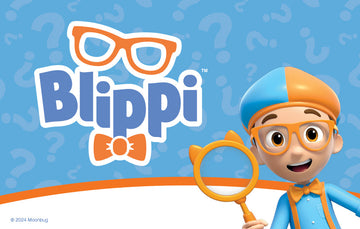Creating a gratitude jar is a delightful way to bond with a little one while fostering a spirit of thankfulness. This simple activity encourages families to reflect on the good things in their lives. A gratitude jar becomes a cherished family tradition that can be enjoyed year after year.
Every week, families can write down things they are thankful for and place them in the jar. As the jar fills up, it serves as a visual reminder of their blessings. This practice not only nurtures gratitude but also sparks meaningful conversations between parents and children.
Over time, reading through the notes in the jar can bring joy and strengthen family ties. It helps children recognize the positive moments in everyday life. Adding creativity to the jar with decorations makes it even more special, turning a fun activity into a treasured keepsake.
The Concept of a Gratitude Jar
A gratitude jar is a simple yet impactful way for families to express thankfulness. It encourages positivity and togetherness as family members share their moments of joy and appreciation.

What Is a Gratitude Jar?
A gratitude jar is a container where people can collect notes about things they are thankful for. Each note represents a moment of gratitude, whether big or small.
Families often use colorful paper or sticky notes to write their thoughts. They then place these notes in the jar. This activity can be done daily or weekly. The goal is to create a collection of thankfulness that everyone can see and cherish.
Decorating the jar can be part of the fun. Family members can personalize it with stickers, paint, or markers. This makes the jar unique and special to their family.
Benefits of Gratitude Jars for Families
Creating a family gratitude jar can strengthen bonds among members. It encourages open conversations about what they appreciate in life.
This practice promotes a positive mindset. By focusing on good moments, families can uplift each other's spirits. It can also help children learn to express their feelings and recognize the good around them.
Using a gratitude jar regularly can help reduce stress. When family members look back at their notes, they can remember happy times. This can provide comfort during difficult moments, making gratitude a key part of family life.
Getting Started with Your Gratitude Jar
Creating a gratitude jar is a fantastic way to foster appreciation and joy. It allows children to express their feelings while spending quality time with their parents. Here are key steps to get started.
Choosing the Right Jar
Choosing the right jar is important for this activity. It can be any type of jar that fits the child's style. Here are some options:
- Mason jars: These are classic and come in various sizes.
- Glass jars: They are clear and can show off colorful notes inside.
- Plastic containers: Great for younger kids since they are unbreakable.
Make sure the jar has a wide opening so it's easy to put notes in. Decorate the jar together, using paint, stickers, or wrapping paper. This makes it feel special and personal.
Gratitude Jar Supplies
To make the gratitude jar meaningful, specific supplies are needed. Here’s a simple list:
- Notes or paper strips: Use colorful paper to make it fun. Cut them into small pieces.
- Pens or markers: These can encourage creativity. Choose bright colors that stand out.
- Decorative items: Consider stickers, ribbons, or washi tape for decorating.
Having these supplies ready will help make the activity enjoyable. It's easy to find most of these items at home or in craft stores.
Setting Up Your Jar
Setting up the gratitude jar is the final step. Find a nice spot for the jar where it can be easily seen. It could be on a shelf, a desk, or even a kitchen table.
Encourage the child to add notes regularly. They can write down things they are thankful for, like friends, family, or fun moments. It's helpful to set a specific time each week to add new notes. This creates a routine that brings joy and reflection.
The gratitude jar is not just a craft; it becomes a cherished reminder of happy moments.
Creating Gratitude Notes and Prompts
Creating gratitude notes can be a joyful way to express appreciation. In this section, ideas will be shared to help design notes, write prompts, and bring gratitude activities into daily routines.
Designing Your Notes
When designing gratitude notes, the appearance matters. Bright colors and fun shapes can make them appealing. Using colorful paper or stickers adds a personal touch.
Consider making notes in different sizes. For example, a smaller note can fit in a jar, while a larger one can be used for more details. Writing in bold or cursive can also make the notes stand out.
It's important that children feel involved. Let them decorate the notes with their drawings or stickers. This makes the activity both creative and personal.
Writing Prompts for Gratitude Reflection
Prompts can help get the ideas flowing. Simple questions can guide children in reflecting on what they appreciate. Here are some prompts to consider:
- What made you smile today?
- Who is someone you are thankful for?
- What is your favorite place to be?
Children can write their answers on the gratitude notes. Each note can be a moment captured, showing their feelings. This practice encourages kids to think about positive experiences.
Changing prompts often keeps the activity fresh. New questions can inspire different reflections each week.
Incorporating Gratitude Activities Into Everyday Life
Gratitude activities don’t have to be just fun projects. They can be part of daily life. Families can set aside time at dinner to share one thing they are thankful for. This habit strengthens family bonds.
Another idea is keeping a gratitude journal. Each day, everyone can write one note about something good that happened.
Mixing gratitude activities with everyday tasks makes it a natural part of life. The goal is to encourage a habit of appreciation, making thankfulness feel normal and easy.
Decorating Your Gratitude Jar
Making your gratitude jar visually appealing adds excitement to the activity. Choosing the right decorations can enhance the experience and make it more personal for everyone involved.
DIY Decoration Ideas
Here are some fun ideas to decorate a gratitude jar:
- Paint: Use bright colors to paint the jar. Kids can create patterns or pictures that reflect their happiness.
- Stickers: Gather various stickers, like stars, hearts, or animals. They can be placed anywhere on the jar for a fun touch.
- Ribbon: Tie a colorful ribbon or twine around the neck of the jar. This adds a lovely finish that feels special.
- Personal Touches: Use markers to write inspiring words or quotes directly on the jar. This will remind everyone of positive thoughts.
These decorations make the jar unique and can reflect the personality of the child.
Involving Your Little One in the Decoration
Letting your child help decorate the gratitude jar makes it a more meaningful project. It encourages creativity and brings a sense of ownership.
Start by asking for their ideas. They can choose colors and decorations that they love. For example, they might want to add pictures or drawings of things they are grateful for.
Next, give them materials like glitter, paper, or fabric scraps. They can create a collage or add their personal designs. Engaging them in this process fosters a connection to the jar.
Finally, celebrate their creativity. Display the jar in a special place at home. This way, it serves as a daily reminder to express gratitude together.
Gratitude Jar Printables and Resources
Creating a gratitude jar can be even more enjoyable with helpful printables and resources. These can provide designs, prompts, and ideas for making the activity engaging for everyone involved.
Free Printable Designs
There are many websites that offer free printable designs for gratitude jars. These printables can include beautiful jar labels and colorful note cards. Some popular sites feature cute graphics that make the jar look inviting.
Families can download and print these designs at home. Using different colors can help to keep the activity fun. Some printables even come with prompts for what to write. This makes it easier for kids to express their feelings.
To find these, search for "gratitude jar printables." You'll find a variety of designs that fit different styles.
Finding Additional Resources
To enhance the gratitude jar experience, many online resources provide tips and ideas. Parents can search for blogs or articles that discuss ways to use a gratitude jar effectively. These sources can offer suggestions for themes, such as monthly gratitude or seasonal reflections.
Social media platforms, like Pinterest or Instagram, showcase creative ways to set up and decorate gratitude jars. Some accounts specialize in family activities and can provide inspiration.
Websites also often feature downloadable templates for families to use. These templates include suggestions on how to start the activity and keep it going throughout the year.
Incorporating Gratitude Jars into Holiday Celebrations
Gratitude jars can add extra joy to holiday celebrations. Families can create lasting traditions while teaching children the value of thankfulness.
Creating Thanksgiving Traditions
Thanksgiving is a great time to start a gratitude jar tradition. Families can gather together before the big meal. Each person can write down what they are thankful for on colorful paper slips.
Later, they can share these slips around the table. This activity encourages conversation and helps everyone reflect on their blessings. Afterward, the family can place the slips in the jar. It becomes a beautiful decoration that shows their gratitude.
Parents can involve children in decorating the jar. Use paints, stickers, or ribbons to make it special. This simple activity strengthens family bonds and creates a warm atmosphere.
Christmas and Year-End Reflections
Christmas is another perfect moment to use gratitude jars. Families can focus on thankfulness during the busy holiday season.
Before opening presents, they can take turns reading the messages from the jar. This can remind everyone of the true spirit of giving and appreciation. Families can also encourage kids to write about their favorite holiday memories.
At the end of the year, families can review all the slips. This can be a fun way to reflect on the year's joys.
They can celebrate their achievements and the love they shared. The jar can be kept in a special place, serving as a reminder of their gratitude.
Maintaining and Renewing Your Gratitude Practice
Keeping a gratitude jar fresh and meaningful is important for nurturing thankfulness. Regularly adding notes, reflecting on them, and expressing gratitude helps everyone stay connected to the good things in life.
Regularly Adding to the Jar
It’s essential to make adding to the gratitude jar a regular part of daily life. Set aside a specific time each week, like Sunday night, for family members to write down what they are thankful for.
These notes can include simple joys, kind gestures, or special moments shared with loved ones. Encourage everyone to be specific, like writing "I’m thankful for the warm cookies we baked together." Prompts can be helpful, too. Parents can ask children to share their favorite moment from the week.
Periodic Review and Reflection
Every month or so, gather as a family and go through the notes in the gratitude jar. This time serves as a wonderful opportunity for connection.
As family members read their notes, they can share stories related to each entry. This reflection helps to strengthen bonds and reminds everyone about what brings them joy. It can also show how thankfulness changes over time. Keep a few notes aside that stand out the most for future discussions.
Expressing Gratitude
Finding ways to express gratitude can deepen the experience. Family members should be encouraged to share their thankfulness not only in the jar but also in daily interactions.
They might express appreciation through small acts of kindness or words of encouragement. Writing thank-you cards to friends or family members is another great idea. These actions help build a culture of gratitude within the family, making it a part of everyday life.
By keeping gratitude alive through these practices, families can create a warm and positive environment.





